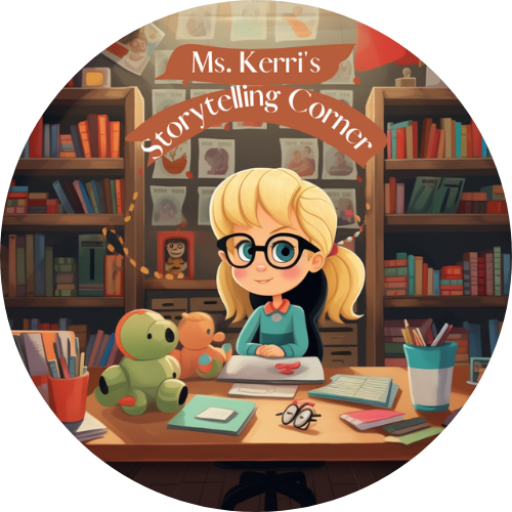In this article, we will explore the world of Montessori-inspired fine motor activities for preschoolers. From understanding the Montessori approach to incorporating fine motor activities into daily routines, we will delve into the principles and practices that promote the development of fine motor skills in young children.
Key Takeaways
- Understanding the Montessori approach is essential for implementing effective fine motor activities for preschoolers.
- Sensory play plays a crucial role in enhancing fine motor skills in young children.
- Activities that improve hand-eye coordination contribute to overall motor skill development in preschoolers.
- Incorporating fine motor activities into daily routines helps children develop independence and focus.
- Practical life activities, inspired by Montessori principles, are beneficial for fine motor skill development in preschoolers.
Exploring Montessori Principles

Understanding the Montessori approach
The Montessori approach is a child-centered educational method that emphasizes independence, hands-on learning, and collaborative play. Developed by Dr. Maria Montessori, this approach fosters a nurturing environment where children are encouraged to explore and discover at their own pace.
Key principles of the Montessori approach include respect for the child, prepared environment, and the role of the educator as a guide.
- Respect for the child: Acknowledging children as individuals with their own needs, interests, and capabilities.
- Prepared environment: Creating a learning space that is orderly, engaging, and tailored to the child’s developmental stage.
- Role of the educator: Acting not as a traditional teacher but as a guide who facilitates learning through observation and support.
The Montessori method promotes learning through doing, encouraging children to engage in activities that are both educational and enjoyable.
Applying Montessori principles to fine motor development
In applying Montessori principles to fine motor development, it’s essential to create an environment that encourages self-directed activity, hands-on learning, and collaborative play. This approach not only nurtures fine motor skills but also fosters a sense of independence and curiosity in preschoolers.
Key activities that align with Montessori principles include:
- Using scissors to cut along lines
- Threading beads on a string
- Transferring objects using tweezers
- Buttoning and unbuttoning clothes on dressing frames
By focusing on practical life skills and sensory-rich activities, educators and parents can effectively support the development of fine motor skills in young children.
These activities are designed to challenge and engage children, promoting their development in a holistic manner. The use of everyday materials makes these activities accessible and easily integrated into daily routines.
Sensory Play and Fine Motor Skills

The role of sensory play in fine motor development
Sensory play is pivotal in the development of fine motor skills in preschoolers. It involves activities that stimulate a child’s senses, encouraging them to explore and manipulate objects in their environment. This hands-on approach not only enhances sensory awareness but also significantly improves fine motor control.
Sensory play activities are designed to be both educational and enjoyable, making them a perfect fit for the Montessori-inspired curriculum.
Here are a few sensory play activities that can aid in fine motor development:
- Playdough manipulation: Squeezing, rolling, and shaping playdough.
- Sand play: Pouring, scooping, and drawing in sand.
- Water play: Transferring water using sponges or pipettes.
- Rice or bean bins: Picking up grains or beans with tweezers or fingers.
Sensory play activities for preschoolers
Sensory play is crucial for the development of fine motor skills in preschoolers, offering a fun and engaging way for children to explore their senses and the world around them. Incorporating sensory play into daily routines can significantly enhance a child’s fine motor development.
Here are a few sensory play activities that are both enjoyable and beneficial for preschoolers:
- Sand and water tables: Allow children to scoop, pour, and sift, developing their hand muscles.
- Playdough: Encourages creativity while strengthening hand muscles through squishing, rolling, and molding.
- Rice bins: Provide a less messy alternative to sand, with opportunities for pouring, measuring, and scooping.
- Finger painting: Offers a tactile experience that promotes finger and hand movement coordination.
Remember, the key to effective sensory play is to provide activities that are open-ended and allow for creative exploration. This not only supports fine motor development but also fosters a child’s imagination and problem-solving skills.
Developing Hand-Eye Coordination
Activities to improve hand-eye coordination
Improving hand-eye coordination in preschoolers is crucial for their overall development. Activities designed to enhance this skill can significantly impact their ability to perform daily tasks and engage in learning activities. One effective method is through bead threading, which not only improves coordination but also encourages patience and focus.
Incorporating playful activities that require precision and timing can make a substantial difference in a child’s hand-eye coordination. Below is a list of activities that are both fun and beneficial:
- Catching and throwing soft balls
- Building with blocks
- Puzzles and simple board games
- Drawing and coloring within lines
- Using scissors under supervision
It’s important to choose activities that match the child’s developmental stage and interest to keep them engaged and motivated.
By regularly incorporating these activities into a child’s routine, parents and educators can help develop strong hand-eye coordination skills that will benefit them in various aspects of their lives.
Benefits of hand-eye coordination in early childhood
After understanding the importance of hand-eye coordination, it’s essential to integrate fine motor activities into the practical aspects of a preschooler’s life. These activities not only reinforce the skills learned but also provide a meaningful context for their application.
Incorporating fine motor activities into daily routines can be as simple as involving children in meal preparation or gardening. These tasks require precision and coordination, offering ample opportunity for practice.
Practical life activities for fine motor skill development include:
- Pouring and measuring ingredients
- Buttoning and unbuttoning clothing
- Using scissors to cut simple shapes
- Planting seeds and watering plants
By embedding fine motor skills into everyday activities, children learn to appreciate their utility and develop a sense of independence and competence.
Fine Motor Activities in Practical Life

Incorporating fine motor activities into daily routines
Incorporating fine motor activities into daily routines is not only beneficial but also easily achievable. By weaving these activities into the fabric of everyday life, children can develop their fine motor skills in a natural and engaging way. One key approach is to identify routine tasks that can double as fine motor skill exercises.
For example:
- Dressing and undressing involve buttoning, zipping, and tying, which are excellent for finger dexterity.
- Setting the table provides an opportunity for practicing gripping and releasing utensils.
- Gardening tasks like digging and planting seeds require precision and are great for hand strength.
By integrating fine motor activities into daily routines, children learn to master these skills through repetition and real-life application.
It’s important to remember that the goal is not to add more to your day but to enhance what you’re already doing. This approach ensures that children are not only learning valuable life skills but are also improving their fine motor abilities in a meaningful context.
Practical life activities for fine motor skill development
Integrating fine motor activities into the daily routines of preschoolers not only enhances their skill development but also instills a sense of independence and accomplishment. Activities such as pouring, threading, and cutting are not just tasks; they are opportunities for growth and learning.
Pouring water from one container to another is a simple yet effective exercise. It teaches control, precision, and patience, all of which are crucial for fine motor development. Similarly, threading beads onto a string or lace not only improves dexterity but also encourages creativity and concentration.

Cutting with safety scissors along dotted lines on paper can be both fun and educational. It helps in developing the pincer grasp, a fundamental skill for writing.
Here is a list of practical life activities that can significantly enhance fine motor skills in preschoolers:
- Pouring liquids
- Threading beads
- Cutting paper
- Buttoning and unbuttoning clothes
- Using tweezers to transfer small items
By incorporating these activities into their daily routines, children can develop strong fine motor skills while engaging in meaningful and enjoyable tasks.
Conclusion
In conclusion, Montessori-inspired fine motor activities are a valuable way to support preschoolers’ development. These activities promote independence, creativity, and cognitive skills while also fostering a love for learning. By incorporating these activities into daily routines, parents and educators can provide a nurturing environment for young children to thrive and grow.
Frequently Asked Questions
What is the Montessori approach to fine motor development?
The Montessori approach emphasizes hands-on, self-directed learning, and the use of specially designed materials to promote fine motor development in preschoolers.
How can I apply Montessori principles to fine motor development at home?
You can create a Montessori-inspired environment at home by providing open-ended, sensory-rich activities, and using real-life objects for fine motor practice.
What is the role of sensory play in fine motor development?
Sensory play engages the senses and helps children develop fine motor skills by exploring different textures, shapes, and movements.
What are some sensory play activities suitable for preschoolers?
Sensory bins, playdough, water play, and nature exploration are great sensory play activities that promote fine motor development in preschoolers.
How can I help my preschooler improve hand-eye coordination?
You can engage your preschooler in activities such as threading beads, pouring and scooping, and using tongs to improve hand-eye coordination.
What are the benefits of hand-eye coordination in early childhood?
Hand-eye coordination is essential for tasks such as writing, drawing, and using utensils, and it also supports overall physical and cognitive development in early childhood.


Ms. Kerri’s Corner provides a exciting virtual space for preschool learning. Through a variety of engaging activities, she exposes young minds to early math, literacy, science and social-emotional skills in a developmentally appropriate way. Centers for blocks, art, books and music allow children to explore hands-on learning at their own pace. Guided lessons subtly introduce number sense, letter sounds and narrative thinking. Careful observation gives insight into each child’s progress across domains. Viewers are also invited to participate, reinforcing that their ideas are valued. By making learning fun yet purposeful, Ms. Kerri lays the groundwork for future academic success while fostering creativity and imagination. Her program offers preschoolers valuable screen-based learning experiences.




